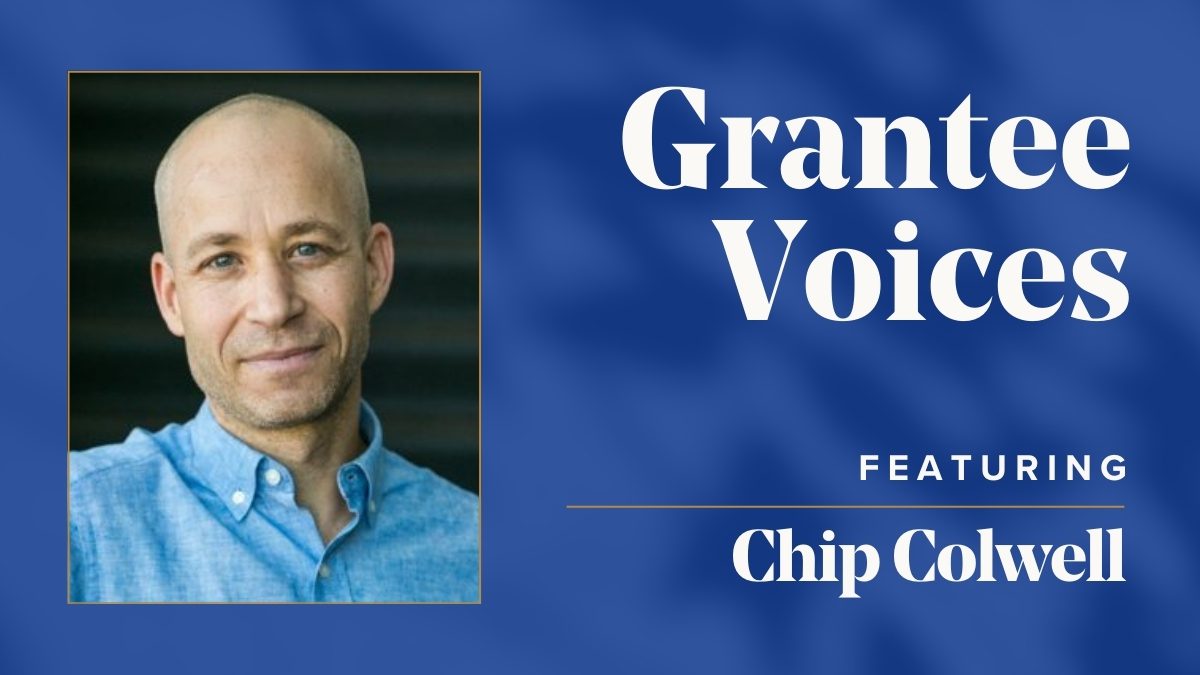The ‘Grantee Voices’ series features contributions from our remarkable grantees. This article was written by Chip Colwell, Editor-in-Chief of SAPIENS.
Several weeks ago, I found myself lying flat in the dirt. The summer sun beat down so hard it hurt. Sweat gathered in pools on my back and legs; a film of sweat shimmered off my skin. I was digging a square hole, now several feet deep. The soil had shifted from soft and mealy to hard and crisp. As I pulled the trowel along the earth, an occasional rusted nail or fragment of glass popped out, springing into the air.
The archaeological team I was working with was searching for an old outhouse. More than once that day I was contemplating how strange it was to be mucking around where people pooped a century ago. What really were we hoping to gain?
The elusive outhouse was once out back to an old dancehall in Dearfield, an African American agricultural settlement on Colorado’s eastern plains. Deserted but not forgotten, Dearfield is being reclaimed as a heritage site by descendants and the Black American West Museum in Denver.
Inspired by Booker T. Washington’s Up from Slavery, Oliver T. Jackson founded Dearfield in 1910 as a self-supporting farming community. At its peak in the early 1920s, Dearfield was home to hundreds of residents, but declined during the Great Depression and amid the droughts of the Dust Bowl era, unwinding into a ghost town. Excavating outhouses often provides archaeologists a trove of well-preserved artifacts. In outhouses, people tend to throw away both common trash and the things hidden from public view. It is from this detritus that past lives come back to life.
But digging in Dearfield’s old toilet, I couldn’t help but wonder what was really motivating me. Was it the past? The present or the future? The relevance of the outhouse to Dearfield I could glean with each artifact that was uncovered; but what was the relevance of Dearfield to our world today? What exactly was I hoping to learn?
On the one hand, questions of race and belonging, economic autonomy for Black communities, and the dire consequences of drought in the West are all as germane today as they were during Dearfield’s struggle for survival. On the other hand, some might struggle to see the significance of a few slight ruins huddling at the edge of the Great Plains.
I believe archaeology, the study of humans through their material remains, does have the potential to matter—for the here and how, and what is yet to come. But to do so, archaeologists must better distinguish its aims between gathering information (knowledge obtained from study, investigation, or instruction) and cultivating wisdom (the ability to use knowledge to make good judgements).
Archaeology first emerged as an informational science. Gaining academic momentum in the 1800s, archaeology was focused on solving the mysteries of who lived where and when. For example, when Americans pondered who built the massive ancient mounds of earth that dot the Midwest—Lost Israelites, Vikings, Greeks, Atlanteans, Phoenicians?—it was archaeologists who were called upon to settle the matter. (Native Americans, it turns out.) Dubbed “culture history,” this method of archaeological science was at first most committed to illuminating the development of different societies over time. On the ground, this meant studying the patterns of pottery and stone tools to create chronologies and typologies, so that scholars could trace the movements and interactions of people. Archaeologists were constructing history, not meaning from it.
While this early work was foundational for the field’s development, the world’s contemporary crises—wars, environmental crises, profound inequities—demand a different kind of engaged science. Now is the time to shift the field towards wisdom.
The need to shift the field of archaeology, and its umbrella discipline anthropology, towards using knowledge of the past to make better decisions today, was a signal motivation for the recent John Templeton Foundation grant my team and I at the digital magazine SAPIENS received, “Writing for the Future of Humanity.” This project trains anthropologists to improve their ability to communicate in the public sphere through popular writing and podcasting—to enable citizens and policy makers to grasp how a deep knowledge of human history and culture can guide humanity’s decision-making.
What does this look like in practice?
It looks like archaeologist Anna Gruber’s story of the surprising discovery of a Victorian-era cache that can help us make sense of loss and grieving. It looks like cultural anthropologist Koffi Nomedji’s research on how coastal people in West Africa are embracing resilience to stand firm in the face of rising sea levels. It looks like the Indigenous anthropologist Karminn C.D. Daytec Yañgot’s work on how oral traditions among the Isnag in the Philippines provide forms of cultural wisdom needed to fight a dam that threatens their homelands. And it looks like biocultural anthropologist Adam Netzer Zimmer’s study on historical volcanic activity in Iceland, to trace how heavy metals can poison the land but also how the lack of social safety nets can be just as deadly—pointing disaster planners to consider both the chemical and social consequences of future eruptions.
At the end of that long, hot day in Dearfield, I came to appreciate the chance to touch history. To be in the dirt, among the literal remains of those settlers who tried so hard to turn a corner of the Plains into their home.
But the real work ahead will be how we—scholars, policy makers, the public—choose to make Dearfield’s history matter. Whether it is about living together or living with little water or living sustainably. Whether, in other words, we work together to transform the knowledge of Dearfield into meaningful wisdom.
This is the work of all archaeology ahead.
